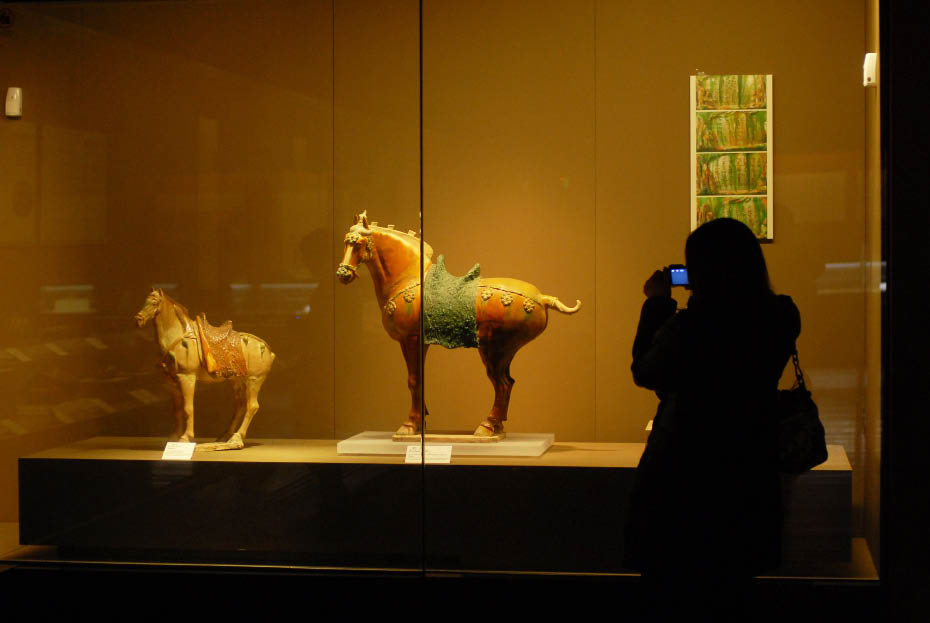|
 |
|
Most tangsancai potteries were unearthed in Xi'an and are now preserved in Shaanxi History Museum. |
Many kilns that formerly produced this type of pottery have been discovered in Henan and Shaanxi, which were important places along the Silk Road, along which merchants and goods passed between China and countries of West Asia, Middle East and Europe during the Tang Dynasty. Different cultural elements traveled this road too: the artistic influence of West Asia and the Middle East is very apparent in many of these wares.
Camel figurines are common. Tang potters were inspired by merchants from West Asia with their caravans of camels laden with goods to trade.
A pottery camel is usually glazed in yellow. Its head is high and its legs strong. A green bell hangs around its neck and a colorful blanket covers its back. Perhaps it carries goods or a few foreign-looking riders, reproducing a scene of merchants and camels making an arduous desert journey. Some of the excavated camel figures carry a few artistes on their backs. Generally, two of them are playing musical instruments while a dancer or acrobat performs between them. Their faces, clothes and instruments represent true-to-life characters from West Asia of that time.
A great variety of tangsancai pottery has been discovered. Aside from animal figurines such as camels and horses, the other two categories are human figures and household utensils such as bowls, plates and jars.
The female figures in tangsancai are real visual evidence of the Tang concept of feminine pulchritude – plump body and chubby face with narrow eyes and thick eyebrows. Mostly they portray aristocratic ladies, standing gracefully, hands clasped in front of them. Their coiffure is elegant, predominantly in bun style. Chubby was the thing to be if you were a Tang Dynasty woman.
Another typical theme is women playing polo. Polo is one of the oldest sports in the world and it started to be played in China under the Han Dynasty. By the time of the Tang it was hugely popular at the imperial court.
Showcasing the colorful social life and splendid culture of this golden age of China, the lifelike figures and the elegant colors of tri-color glazed pottery are the epitome of Tang artistry.
Booming foreign trade at that time helped to export these brilliant artifacts to foreign lands. Their great fame also promoted the development of pottery making in other countries.
Today, on the basis of traditional skills, China's craftsmen have improved the techniques and are producing a great variety of such wares, reviving the brightness and beauty of this centuries-old art. In 2008, Tang tri-colored glazed pottery was approved as a national intangible cultural heritage by the Chinese government. | 